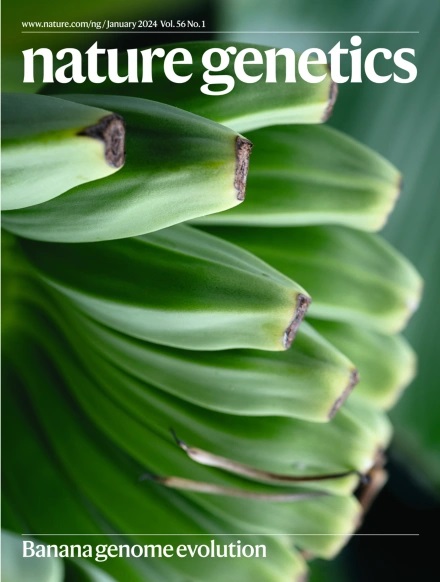Multi-modal spatial characterization of tumor immune microenvironments identifies targetable inflammatory niches in diffuse large B cell lymphoma.
IF 29
1区 生物学
Q1 GENETICS & HEREDITY
引用次数: 0
Abstract
Diffuse large B cell lymphomas (DLBCLs) are a heterogeneous group of malignancies that can arise in lymph nodes or extranodal locations, including immune-privileged sites. Here, we applied highly multiplexed spatial transcriptomics and proteomics together with genomic profiling to characterize the immune microenvironment architecture of 78 DLBCL tumors. We define seven distinct cellular niches, each characterized by unique cellular compositions, spatial organizations and patterns of intercellular communication associated with niche-specific phenotypes of both T cells and tumor B cells. Among these, DLBCLs from immune-privileged sites showed abundant T cell infiltration into diffuse niches, where immune cells were intermixed with tumor B cells and bore transcriptional hallmarks of activation and effector function, suggesting that they may be primed for anti-tumor immunity. Spatial characterization of the DLBCL immune microenvironment, therefore, reveals cellular niches that foster divergent patterns of cell-cell interactions contributing to the phenotypic heterogeneity of both niche-resident tumor and immune cells.弥漫性大B细胞淋巴瘤肿瘤免疫微环境的多模态空间表征确定了可靶向的炎症龛。
弥漫性大B细胞淋巴瘤(DLBCLs)是一种异质性恶性肿瘤,可发生在淋巴结或结外部位,包括免疫特权部位。在这里,我们应用高度多路的空间转录组学和蛋白质组学以及基因组图谱来表征78个DLBCL肿瘤的免疫微环境结构。我们定义了7个不同的细胞壁龛,每个都具有独特的细胞组成、空间组织和与T细胞和肿瘤B细胞的壁龛特异性表型相关的细胞间通讯模式。其中,来自免疫特权位点的dlbcl显示大量T细胞浸润到弥漫性壁龛中,免疫细胞与肿瘤B细胞混合,具有激活和效应功能的转录特征,表明它们可能启动抗肿瘤免疫。因此,DLBCL免疫微环境的空间特征揭示了促进细胞-细胞相互作用的不同模式的细胞壁龛,从而促进了壁龛驻留肿瘤和免疫细胞的表型异质性。
本文章由计算机程序翻译,如有差异,请以英文原文为准。
求助全文
约1分钟内获得全文
求助全文
来源期刊

Nature genetics
生物-遗传学
CiteScore
43.00
自引率
2.60%
发文量
241
审稿时长
3 months
期刊介绍:
Nature Genetics publishes the very highest quality research in genetics. It encompasses genetic and functional genomic studies on human and plant traits and on other model organisms. Current emphasis is on the genetic basis for common and complex diseases and on the functional mechanism, architecture and evolution of gene networks, studied by experimental perturbation.
Integrative genetic topics comprise, but are not limited to:
-Genes in the pathology of human disease
-Molecular analysis of simple and complex genetic traits
-Cancer genetics
-Agricultural genomics
-Developmental genetics
-Regulatory variation in gene expression
-Strategies and technologies for extracting function from genomic data
-Pharmacological genomics
-Genome evolution
 求助内容:
求助内容: 应助结果提醒方式:
应助结果提醒方式:


